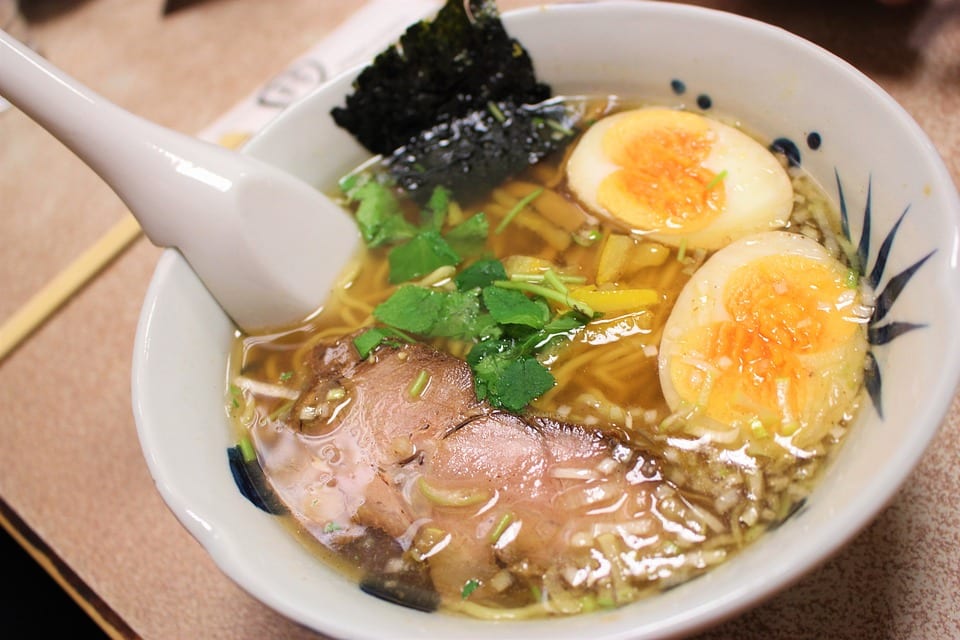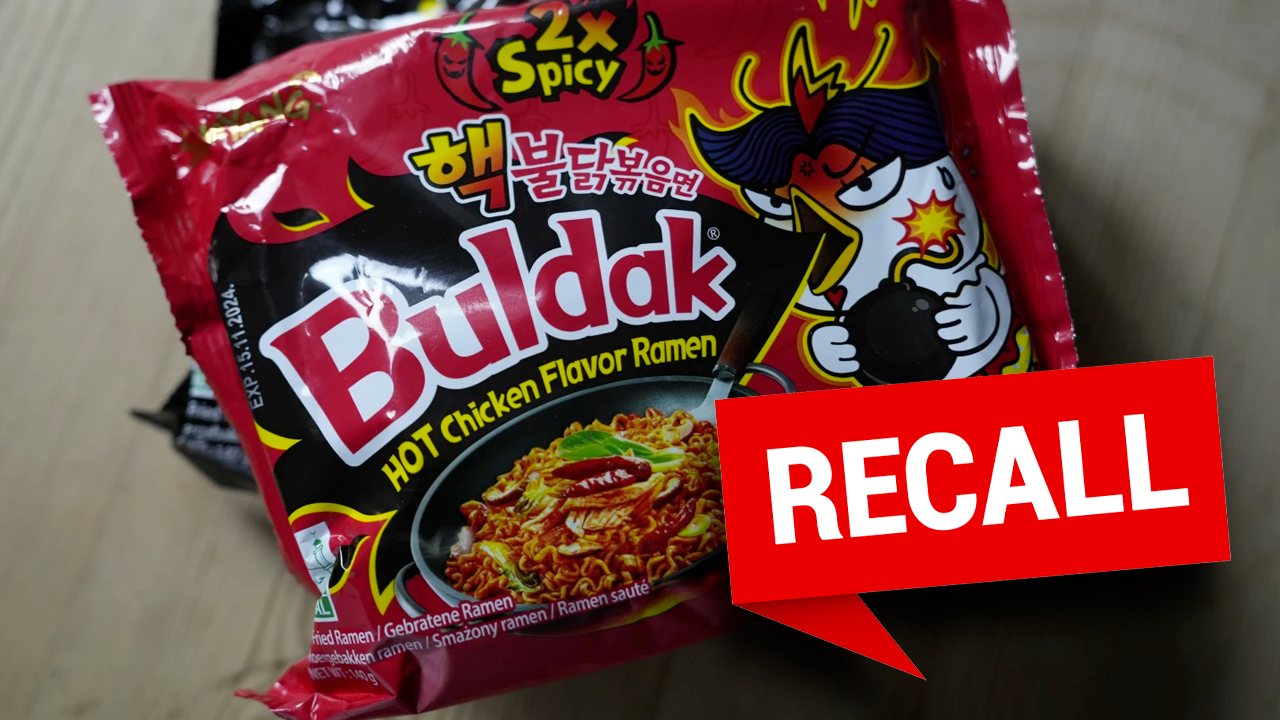Urgent: Ramen Noodle Recall 2024! What You Need To Know
Are your favorite late-night meals suddenly under suspicion? The nationwide ramen noodle recall, initiated in September 2024, demands immediate attention, as it's not just about a simple food item but a potential threat lurking in your pantry. Ignoring this recall could have serious consequences, so understanding the scope, impact, and required actions is now crucial for every consumer.
This isn't just another food scare; it's a deep dive into the heart of food safety protocols and the vulnerabilities that can affect even the most trusted brands. We'll unpack the specifics of the ramen noodle recall of September 2024, from the implicated brands and the potential health risks they pose to the swift responses of manufacturers and the guidance offered by health authorities. Ramen noodles, a ubiquitous staple cherished by college students, busy professionals, and budget-conscious families, have suddenly become the epicenter of a major food safety concern. Knowledge is power, and in this case, its also protection. As the narrative unfolds, you'll gain insights into the expert opinions shaping our understanding, the safety measures you should implement, and the vital consumer advice that can safeguard your health and that of your loved ones.
| Ramen Noodle Recall Information | |
|---|---|
| Recall Initiated: | September 2024 |
| Reason for Recall: | Contamination concerns (Specific contaminant undisclosed but implied through symptoms reported) |
| Affected Products: | Instant Ramen Noodles, Spicy Ramen Cups, Beef Flavor Ramen, Chicken Flavor Noodles (and potentially others - see lists below) |
| Potential Health Risks: | Nausea, Vomiting, Diarrhea, Abdominal cramps, potential hospitalization in severe cases |
| Action Required: | Check packaging for batch numbers and expiration dates; dispose of affected products; contact retailer for refund or exchange; monitor health for symptoms. |
| Manufacturers' Response: | Public statements, voluntary recalls, establishment of consumer hotlines |
| Expert Advice: | Vigilance in product selection, label reading, awareness of recalls |
| Consumer Safety Tips: | Stay informed via official sources (FDA), check expiration dates/batch numbers, educate on food safety practices |
| Reference Website: | U.S. Food and Drug Administration (FDA) |
The ramen noodle recall of September 2024 wasnt a whisper in the wind; it was a full-blown announcement echoing across the food industry. The catalyst? Contamination concerns. The U.S. Food and Drug Administration (FDA), the sentinel of our food supply, took decisive action after receiving a barrage of consumer reports detailing a spectrum of health issues directly linked to the consumption of specific noodle products. This wasn't a knee-jerk reaction but a calculated precautionary measure designed to preempt any potential health risks stemming from the consumption of these potentially tainted products. The FDA's intervention underscored the gravity of the situation, painting a picture of unseen hazards lurking within seemingly harmless packets of ramen.
- Nle Choppas Daughter Clovers Impact Family Life News
- Brock Purdy Jenna Wedding Honeymoon Baby News Details
The recall cast a wide net, ensnaring several well-known brands that had become household names in the ramen world. The following are just a few that faced scrutiny:
- Brand A Instant Ramen Noodles
- Brand B Spicy Ramen Cups
- Brand C Beef Flavor Ramen
- Brand D Chicken Flavor Noodles
But the list didn't end there. Preliminary investigations hinted at a broader scope, suggesting that the contamination might not be isolated to these brands alone. The challenge for consumers became discerning the good from the potentially harmful a task that demanded meticulous attention to detail.
Critical to identifying potentially dangerous products was a keen eye for detail. The telltale signs? Specific batch numbers and expiration dates. These markers, often overlooked in the rush to prepare a quick meal, became the key to safeguarding against potential harm. The official guidance was unequivocal: Check the packaging meticulously. Scrutinize every number and date. If your product matched the identifiers on the recall list, the directive was clear: Do not consume it. The risk, however small it might seem, was simply not worth taking.
The health risks associated with consuming these contaminated ramen noodles were far from trivial. While the exact nature of the contaminant remained shrouded in initial ambiguity, the symptoms reported by consumers offered a chilling glimpse into the potential consequences. The initial wave of complaints detailed a range of unpleasant experiences, from mild nausea to debilitating vomiting. Diarrhea and abdominal cramps were also commonly reported, further painting a picture of gastrointestinal distress. But the specter of foodborne illness loomed large, with the potential to escalate into more severe outcomes. In extreme cases, these seemingly innocuous symptoms could lead to hospitalization, particularly for vulnerable populations like children, the elderly, and individuals with compromised immune systems. The stakes, it became clear, were higher than a simple upset stomach.
For those who found themselves in possession of affected ramen noodles, the recommended course of action was swift and decisive. The first step was to meticulously cross-reference the packaging with the official recall list, paying close attention to batch numbers and expiration dates. If the product was indeed implicated, the advice was clear: Dispose of it immediately. Resist the temptation to consume it, regardless of how hungry you might be or how little food you might have on hand. The potential health risks simply outweighed any perceived benefit. The next step was to contact the retailer from whom the product was purchased. Whether it was a large supermarket chain or a small corner store, the goal was to seek a refund or exchange. Retailers, keenly aware of the potential reputational damage associated with selling contaminated products, were generally cooperative in addressing consumer concerns. Finally, consumers were urged to closely monitor their health for any symptoms of foodborne illness. While not everyone who consumed the affected ramen noodles would experience adverse effects, vigilance was paramount. If any symptoms did arise, seeking prompt medical attention was crucial to ensuring a swift diagnosis and appropriate treatment.
The manufacturers implicated in the ramen noodle recall found themselves in a precarious position, facing not only the immediate financial consequences of pulling their products from shelves but also the long-term reputational damage that could erode consumer trust. In response, many companies moved swiftly to mitigate the fallout. Public statements were issued, acknowledging the recall and outlining the steps being taken to address the issue. Voluntary recalls of affected products were initiated, demonstrating a commitment to consumer safety. And perhaps most importantly, many companies established dedicated hotlines to field consumer inquiries, address concerns, and provide guidance. These hotlines served as a crucial bridge between manufacturers and the public, allowing for a direct exchange of information and a demonstration of responsiveness.
The ramen noodle recall served as a stark reminder of the complex and often invisible world of food safety. Experts in the field, long advocates for stricter regulations and increased vigilance, seized the opportunity to underscore the importance of their work. Dr. Jane Smith, a renowned food safety expert, weighed in on the situation, emphasizing the critical role that consumers play in protecting themselves. "Consumers," she stated, "should always be vigilant about the products they purchase. Reading labels and being aware of recalls can significantly reduce health risks." Her words served as a call to action, urging individuals to take a more proactive role in ensuring the safety of their food supply.
The events of September 2024 highlighted the need for heightened consumer awareness and a commitment to safe food handling practices. To stay safe in an increasingly complex food environment, consumers were encouraged to arm themselves with knowledge. This meant staying informed about product recalls through official sources like the FDA, which served as the authoritative voice in disseminating critical safety information. It also meant adopting a habit of carefully checking expiration dates and batch numbers before consuming any packaged food product, regardless of how familiar or trusted the brand might be. And finally, it meant taking the time to educate themselves on basic food safety practices in the kitchen, such as proper handwashing techniques and the importance of cooking food to safe internal temperatures. These simple steps, when consistently implemented, could significantly reduce the risk of foodborne illness and ensure a safer and healthier food experience for all.
- Stay informed about product recalls through official sources like the FDA.
- Always check expiration dates and batch numbers before consumption.
- Educate themselves on food safety practices in the kitchen.


Detail Author:
- Name : Nova Haag
- Username : igrady
- Email : ralph.jast@gmail.com
- Birthdate : 1979-09-18
- Address : 1477 Wiegand Motorway Rowemouth, NH 13145-3338
- Phone : 504.959.4446
- Company : Shields LLC
- Job : Hoist and Winch Operator
- Bio : Quo deserunt suscipit aut molestiae et. Est necessitatibus rerum aut voluptas. Non et sed rerum consequatur aut minus fuga.
Socials
linkedin:
- url : https://linkedin.com/in/vandervort1970
- username : vandervort1970
- bio : Libero odit illum ea facere.
- followers : 5339
- following : 2533
tiktok:
- url : https://tiktok.com/@candelario_id
- username : candelario_id
- bio : Et ipsa ducimus maxime minima nemo vel. Cupiditate aut ut et ea.
- followers : 657
- following : 1302